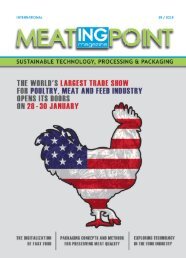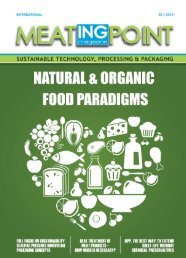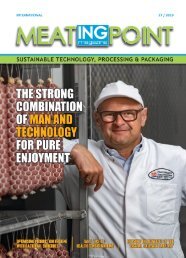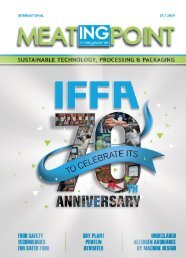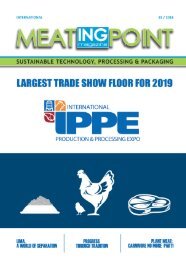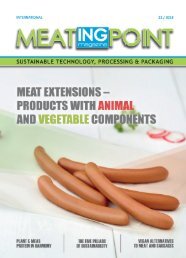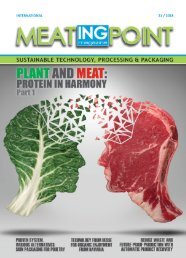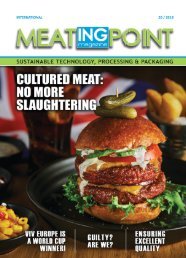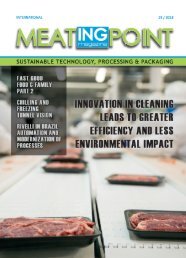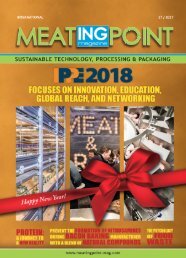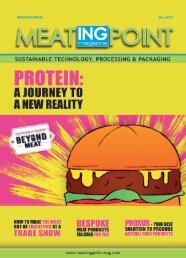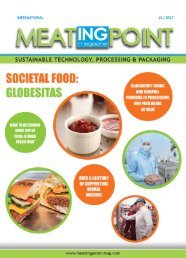MEATing POINT Magazine: #08/ 2016
Create successful ePaper yourself
Turn your PDF publications into a flip-book with our unique Google optimized e-Paper software.
TRENDS<br />
low-energy foods are often associated<br />
with higher amounts of waste. The netgreenhouse<br />
gas emissions are not much<br />
lower compared to animal-based foods<br />
or high-energy diets such as dairy, sweets,<br />
nuts, salted snacks, and meat. Diets of the<br />
highest nutritional quality are therefore<br />
not necessarily the lowest in greenhouse<br />
gas emissions, thus, what is good for the<br />
health is not always good for the planet<br />
and vice versa.<br />
Subsequently, for foods, the nutritional<br />
value relative to greenhouse gas emissions<br />
needs to be taken into consideration. For<br />
example, animal-derived foods like dairy<br />
and meat are associated with higher<br />
emission levels than sugar; they are also<br />
more nutrient dense. In other words, testing<br />
the relationship between a food’s nutrient<br />
profile and their carbon footprint can help<br />
those food groups that provide both calories<br />
and optimal nutrition at low carbon cost. In<br />
many cases, foods associated with a higher<br />
carbon emission –such as meat and dairyare<br />
also some of the most nutrient dense. It<br />
is clear that in the future a healthy planet<br />
will need a balanced carbon footprint to<br />
provide optimal nutrition.<br />
About the Author:<br />
Henk W. Hoogenkamp is Member of<br />
the Executive Board of a NASDAQ<br />
listed protein company, a publicist<br />
and protein application specialist. He<br />
has previously been President of DMV<br />
Campina USA/Frieslnad Campina/<br />
and Senior Director Protein Strategy<br />
DuPont Solae.<br />
38 www.meatingpoint-mag.com | <strong>2016</strong>




